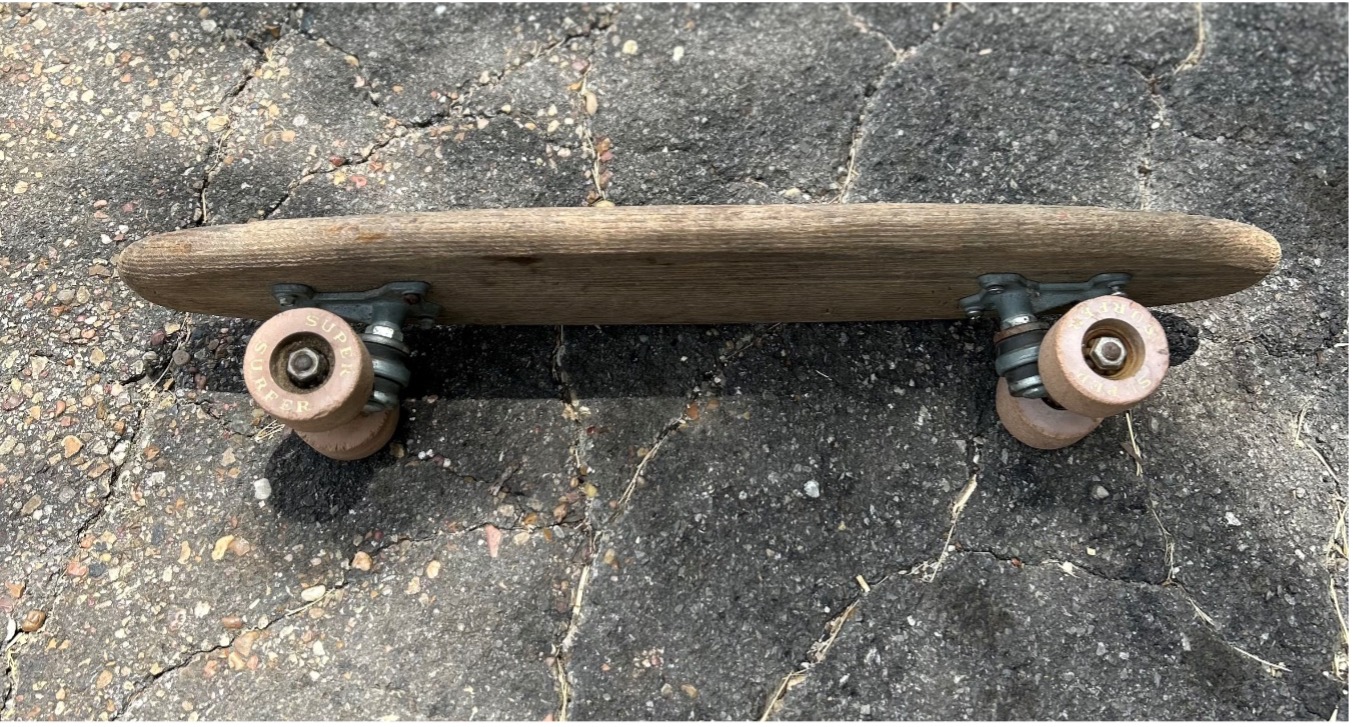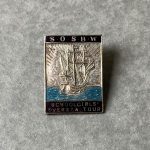At the dawn of the 1960s, skateboarding burst onto the scene so quickly that parents and community leaders were unsure how to deal with the “craze.” While it began as a form of leisure for surfers when the waves were idle, it quickly became a habitual sidewalk activity for America’s youth. Some of the earliest skateboards were constructed using wood planks and steel wheels from roller skates. In time, surfboard manufacturers began distributing the skateboard as one complete item. The increased production allowed a child living in the suburbs—thousands of miles from ocean waves—to “surf” the streets.

One of the most popular manufacturers was Hobie, a California surfboard company that began shaping surfboards in 1950. Hobie’s most popular skateboard model was the Super Surfer. Fitted with clay wheels and a deck around 6 inches wide, the “super surfer” was one of the first skateboards to be mass-produced. Between 1963 and 1965, manufacturers sold over 50 million skateboards across the US. But the increased presence of skateboarders had a social reaction.
In 1965, Life magazine warned parents that while it may be a “joyriding device” for their children, it was also a “menace to limb and even to life.” Newspaper editorials ran stories on the injuries resulting from skateboarding. US cities moved quickly to ban the act of skateboarding in public spaces—a common city practice even to this day. Director Claude Jutra’s 1969 mockumentary, The Devil’s Toy, depicted scenes of police confiscating skateboards and children running away, much like burglars at a robbery scene. As a result of the adverse public reaction, sales declined in the late 1960s. By the early 1970s, “No Skateboarding” signs were ubiquitously posted in town squares, public parks, and along sidewalks.
Historians of childhood and youth note that parental panics are intense episodes where adult fears of childish activities are dramatically exaggerated. Perhaps the rapid production and child consumerism generated a “craze” that shocked parents into a fearful reaction. However, as manufacturers argued, the number of injuries incurred from skateboarding was on par with (or lower) than that of bicycles, scooters, and roller skates. The early days of the “super surfer” and its quick decline thus demonstrate how alarmist responses created a stigma around a childish commodity. More than just a harmful activity, Life opined that skateboarding ignited “too much moxie” among America’s children, creating “mayhem in the streets.”
James Howard is a Ph.D. candidate in the Department of History at Baylor University. His research focuses on religion and reform in antebellum America and teaches courses on American childhood and youth within a global context.






